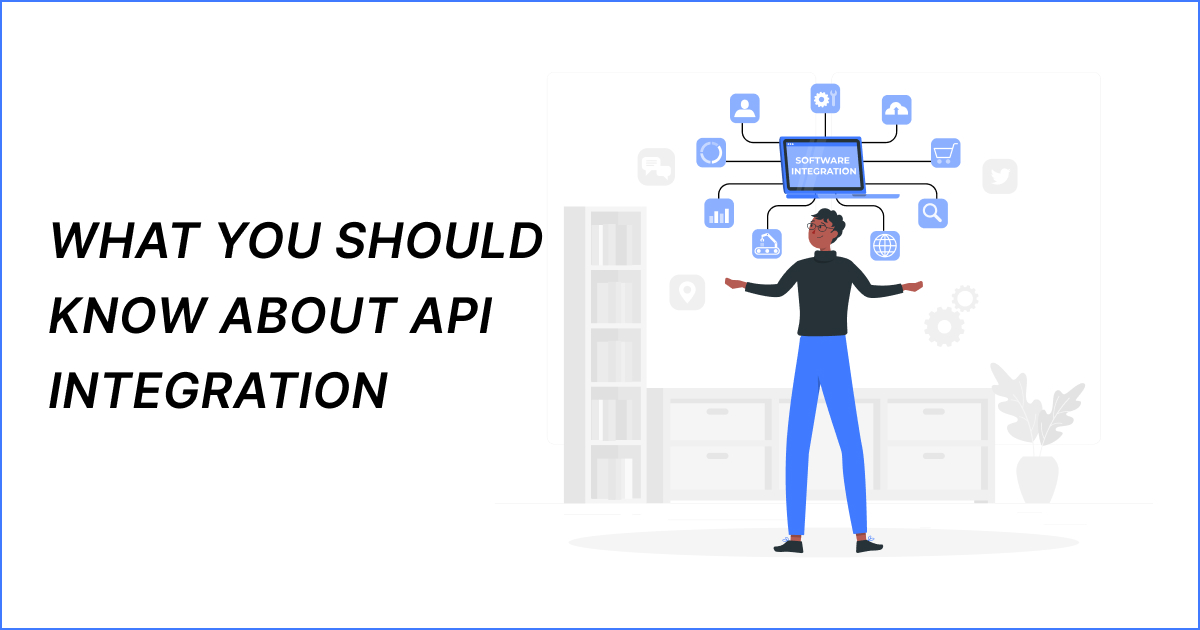API integration connects different applications. It allows them to work together smoothly. APIs are the behind-the-scenes code that powers popular apps like social media and online shopping.
But what is API integration exactly? And why should you care about it? Let’s explore API integration’s world. We’ll uncover how it transforms businesses and developers’ work. Get ready for an exciting journey.
What Are API Integrations?
API integrations connect different apps together. They allows apps to talk and share data. APIs are the link between apps. Integrating apps through APIs, makes work smoother. Apps share data easily. This helps businesses automate tasks and do things better.
APIs connect all the software pieces. Companies use them to seamlessly combine apps. Integrating different tools together boosts work output. APIs act as the bridge between programs to swap info. This improves business workflows by a huge margin.
The Importance of API Integrations
Using APIs allows businesses to connect different systems. This brings lots of good things. Let’s explore some of the benefits APIs offer across many industries.
- Enhanced Efficiency
Companies get help from API links. They make work easier by putting tasks on autopilot. The links join different programs. They move data between them. That makes everything run smoothly and saves time and money. Workflows get better thanks to the links.
- Improved Customer Experience
Having different systems work together helps companies give customers a smooth experience. This is done by making sure data is the same and easy to access from many places.
- Scalability
APIs can help businesses grow with ease. Businesses use APIs to add new tools. They also use APIs to connect to other services. APIs make it simple to change features as needed.
- Innovation
Building new things often requires using stuff that already works. API integrations let developers take features from apps and websites and mix them in new ways. They can then create cool, fresh solutions that do new things.
Types of API Integrations
API integrations come in many forms. Each kind works for a special reason:
- Open API
Public APIs are open sources. Anyone can utilize them freely without limits. They are accessible to all users without any restrictions or conditions.
- Partner API
Partner APIs are shared to other businesses. But, only those with a work link to the API firm. Access is limited. Only clients with licenses can use them. So, partner APIs have stronger security steps than public APIs.
- Private API
Private APIs are also called internal APIs. Only systems inside a company can use these APIs. These APIs help teams work better together. Coworkers use private APIs to improve products and services. The APIs are not for the public.
- Composite API
APIs that combine different data and services are called composite APIs. They run tasks one after another due to an execution result, not a task request. Their key purposes are to boost execution speed and enhance web interface listener performance during API development.
Challenges of API Integrations
Working with APIs has its ups and downs. Some positives are easy sharing of data and faster building of products. However, there can also be difficulties, including:
- Security Concerns
Security is a big deal when mixing different systems. If not done right, private info could get leaked. To keep data safe, strong security like passwords and coding is super important. You don’t want your secrets spilled.
- Compatibility Issues
Combining systems with different ways to talk can cause problems. So it’s important to ensure they work well together to avoid issues.
- Complexity
Keeping track of many connections can be hard work. But, having good records, checking systems often, and making smart rules make things easier. It helps everything run smoothly without too much trouble.
- Reliability and Performance
Using other companies’ APIs for key tasks can cause issues. Those issues are slow APIs and API failures. So it’s important to pick trustworthy API providers. And your code should handle errors well. That way, your app won’t break if an API fails.
Best Practices for API Integrations
Reaping full advantages from API connections takes planning. But problems can arise too. To get the most out of APIs with less headaches, try this:
- Clear Documentation
Give developers complete guides on using your APIs. Explain how to access them. List endpoints, inputs, ways to log in, and error codes. This helps developers connect smoothly.
- Authentication and Authorization
Use secure login methods like API keys, OAuth, or JWT tokens. These control who can access your APIs and sensitive data. They protect important information.
- Robust Error Handling
Have a good way to manage errors and exceptions. Give helpful error messages. This allows fixing issues easily. It helps with troubleshooting and debugging.
- Throttling and Rate Limiting
Limit how many requests can be made to your APIs. This stops abuse and overuse. It protects against attacks that could make them unavailable. It keeps performance high.
- Monitoring and Analytics
Track API usage, performance, and error rates. Use monitoring tools. This lets you check on issues proactively. You can troubleshoot and optimize better.
- Versioning
Give your APIs version numbers when updates happen. This keeps things working for current users. It gives a path to upgrade to new versions smoothly.
Conclusion
Apps need to talk with one another to work well. This communication is done through API integrations. APIs let different apps share info and work together.
There are many types of APIs. Understanding them is key for businesses. Proper API use means apps run smoothly. It also improves customer service and helps make new products. API skills give companies an edge.
In today’s world, API integrations are a must-have. Companies that use APIs gain an important competitive advantage over those that don’t.






